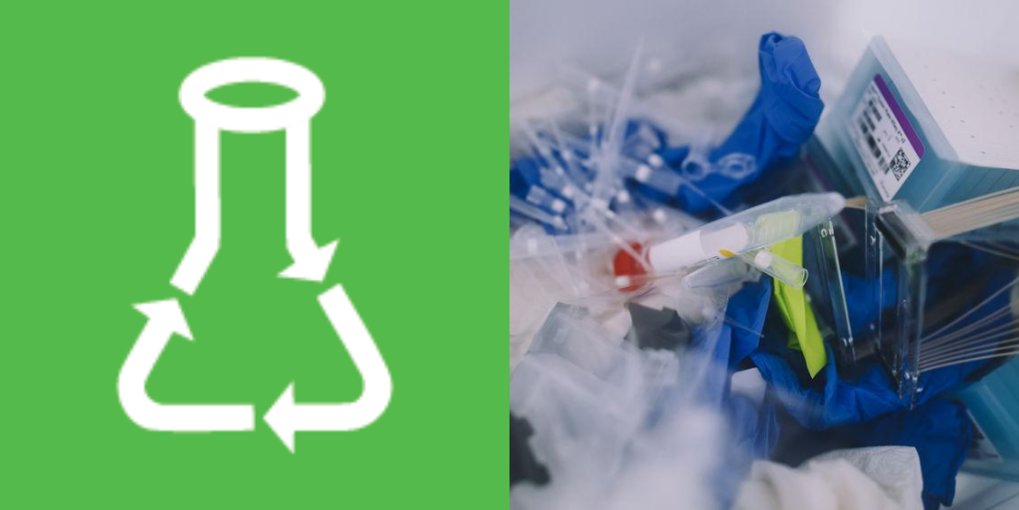Labconscious biologists share sustainable laboratory practices
by Nicole Kelesoglu, editor and blogger

Being “labconscious” means having a broad awareness of the environmental and economic costs of performing laboratory work. Our online community at labconscious.com shares news and practical solutions to improve lab sustainability. These ideas range from simple actions that individuals can take to reduce single-use plastic waste or switch to greener protocols, to examples of group efforts for waste diversion, equipment sharing or energy initiatives. “That’s the way we have always done it” is not a good enough reason to stop biologists in our community from re-evaluating lab practices to prevent pollution.
As the editor for Labconscious, I feel quite proud that New England Biolabs supports this open resource for sustainability in life science. Scientists refer to the blog posts and resource pages for online calculators, green lab groups, services, and uniquely green lab supplies and technology. Labconscious shares this information freely and exclusively based on merit.
This resource has only increased in value in COVID-19 pandemic conditions. Staggered lab shifts and lab supply bottlenecks have heightened life science’s focus on lab operation efficiency. Labconscious blog readers already had insights on how a pipette tip washer and sterilizer works to reuse this plastic consumable, that recycling lab gloves is not always the most sustainable disposal, that organizations can modernize sharing lab supplies, microfluidics can make biomedicine more efficient, and saving energy can be automated.
You might be surprised to learn how life science labs are succeeding in green lab initiatives. Featured ‘green lab tips” has provoked their adoption into more labs. The life science specific context makes the applicability and potential pitfalls of sustainability tactics clearer upfront. Concurrently, lab sustainability professionals who assist labs to establish initiatives are sharing their quantified carbon and cost impacts. Biologists are encouraged, since they can set expectations based on other labs accomplishments. Going green in labs is in a growth cycle.
Our community is also helping to make lab sustainability ideas more accessible to talented scientists worldwide. We all know that time and research funding for scientists are not infinite resources. Resource efficiency is paramount. Labconscious receives inquiries from biologists in the Americas, Europe, Africa, Oceania and Asia. We communicate about broad and specific challenges. It’s gratifying to be able to amplify helpful information!
Join us! Your unique knowledge is needed!
You may be thinking… Energy? Water? Waste? Isn’t that someone else’s job to manage? How do we know that sustainability is a responsibility for biologists? If you take a step back to look at the big picture it becomes clear why biologists’ input is critical. Your lab experience can help the entire community understand what is possible.
Biologists have highly specialized knowledge of the complex conditions required for assays, nucleic acid manipulations and culturing cells. A lab space must keep experiments running and keep vital biologicals and chemicals stable. Oftentimes no one outside the field, or sometimes even outside an individual lab setting, can determine how cold freezers must be set, how often water baths can be turned off, or whether less toxic chemicals can be used for analyses and still produce optimal results. As a profession, we must ask ourselves those questions or suffer complacency.
There are further nuances to going green that require broad life science participation. Not every green lab practice is possible or even necessarily more sustainable in every context. Beyond the type of science being done, the geographical location of a lab can determine true sustainability. For example, the worldwide recycling crisis and ocean plastic disaster has compelled biologists to reexamine the single-use plastic device life cycle. However, tactics to address this issue are restricted by upstream device design and downstream by locally available disposal services.
Eco-friendly lab work does not catch on when better ways are implemented in one lab, or even in one life science organization. The impact is exponential when the entire field of life science is aware and individual scientists are empowered to decide how sustainability can be applied to their lab workflow. I invite you to visit the Labconscious web site, to submit your ideas, and to sign up for the blog.
Thank you for your consideration and best wishes on your research projects!
